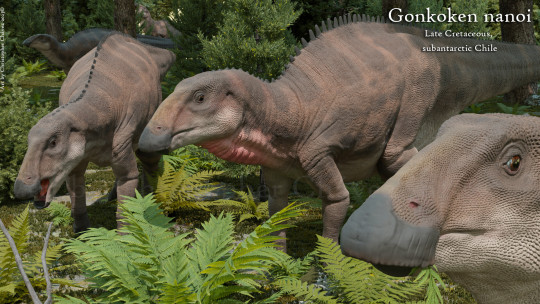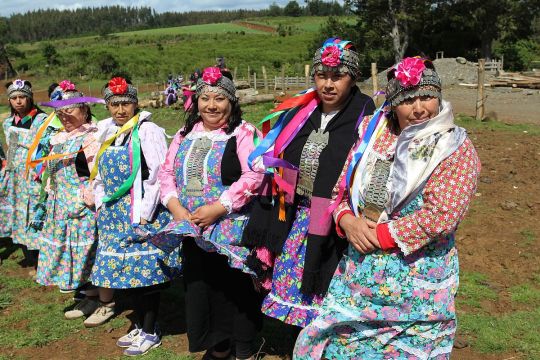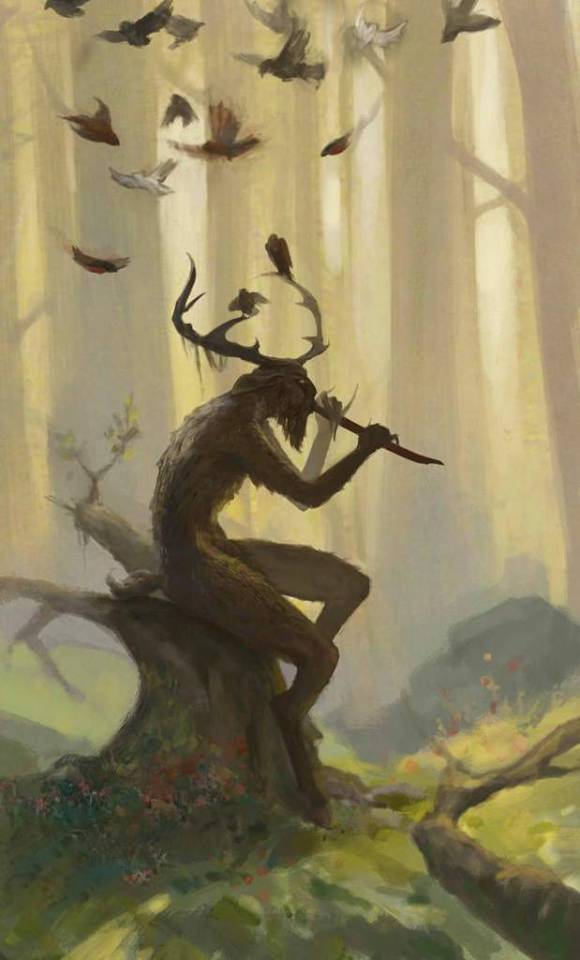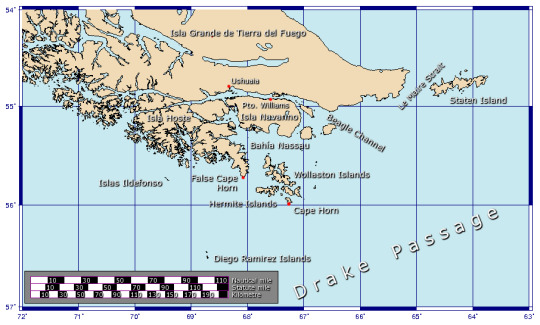#tehuelches
Explore tagged Tumblr posts
Photo

#INKTOBER52 #BUILD #inktober #inktober2022 #inktoberallyearlong #inktoberart #inktoberchallenge @jakeparker @inktober #inktober52build #construir #construccion #tehuelches #monteverde #dibujo #drawing #ink #tinta #bufoland #puertomontt #chile #instamontt #puertomonttchile #melipulli https://www.instagram.com/p/CncJaBGOsfS/?igshid=NGJjMDIxMWI=
#inktober52#build#inktober#inktober2022#inktoberallyearlong#inktoberart#inktoberchallenge#inktober52build#construir#construccion#tehuelches#monteverde#dibujo#drawing#ink#tinta#bufoland#puertomontt#chile#instamontt#puertomonttchile#melipulli
1 note
·
View note
Text


Indigenous Mikus by weevildoing on Twitter!

Here is the link to Survival International.
#weevildoing#south america#north america#caribbean#africa#southeast asia#asia#south asia#venezuela#brazil#ethiopia#peru#india#myanmar#argentina#indigenous miku#yanomami miku#taíno miku#chin miku#quechua miku#tehuelche miku#matsés miku#karo miku#dongria kondh miku#rip... this post has so many tags some of them don't show in the search#if you use twitter consider retweeting the image there!
73 notes
·
View notes
Text
Tapejara (it means "lord of the ways", "senhor dos caminhos" in tupí-guaraní) is such an excellent name for a pterosaur, just another banger from Brazil, here in Argentina we just name our critters big dick names like ARGENTINOSAURUS and GIGANOTOSAURUS
31 notes
·
View notes
Text

Day 19: María la Grande!
The birth name of the woman known as María la Grande is, sadly, lost to history. She was a casica, or ruler, among the Tehuelche people of Patagonia, who rose to prominence in the early nineteenth century. Baptized as María (she practiced a syncretic form of Catholicism, blended with traditional Tehuelche religion), she became her people’s primary diplomat in dealings with Europeans.
This was a time of great societal change among the Tehuelche. The full-scale colonization of Patagonia that would see mass displacement and genocide was still decades away, but more and more foreigners were encroaching on their lands. Meanwhile, the arrival of the horse had transformed them into an equestrian people, expanding their traditional nomadic paths but also bringing neighboring groups into greater conflict. Marìa was the daughter of a Southern Tehuelche leader; she married and had at least five children. Her society was generally patriarchal, but Marìa’s elite ancestry and skills as a diplomat seem to have propelled her into power.
In addition to trading and negotiating with Europeans, whose admiring accounts dubbed her “La Grande,” she was an arbiter of justice among the differing groups of Tehuelche, handling disputes and making rulings. During her twenty year reign, wars between the Tehuelche ceased, and by the time of her death in the 1840s, “Marìa the Old” was the most respected leader in Patagonia.
#maria la grande#chilean history#indigenous history#tehuelche#history#awesome ladies of history#october 2024#my art#pen and ink
3 notes
·
View notes
Text
Queer Polyglot/Language Learning Community
Do you speak or have resources in any of these languages? I'm building an online dictionary of queer-related words (anything regarding sexuality, romantic orientation, gender expression, intersex traits, etc).
The languages I still haven't manage to get much from are (in no particular order):
Hmong
Yagan
Aonikenk
Manchu
Jeju
Okinawan
Ainu
Kakán
Ossetian
Even if you don't speak any of these, but you speak a language few people know, I'd love for you to reach out.
#hmong#yagan#aonikenk#tehuelche#jeju#manchu#ainu#okinawan#kaweskar#alacaluf#ossetian#lgbt#lgbtq#lgbtqia+#languages#langblr#polyglot#multilingual#bilingual#trilingual#native american#asian
3 notes
·
View notes
Note
Como se sentirían con patoruzú para sexyman?
No puedo, Marta...........
#asklatinotiktok#vos te pensas que patoruzu pasa la vara acá en TUMBLR?#me refiero al hecho de que se supone que es un tehuelche y se ve asi
33 notes
·
View notes
Text
love seeing gringos trying to pronounce the names of dinos from here and failing miserably
#girl i just listened to the worst pronunciation of maip ever done#and they struggled to say tehuelche so much too 😭#<- also not to get into the debate of using that name but.........#still waiting to see anyone say ischigualasto right tho
0 notes
Text
Random Real Thoroughbred: INDIO TEHUELCHE
INDIO TEHUELCHE is a horse born in Argentina in 2011. By ORPEN out of INDIA NORTENA. Link to their pedigreequery page: https://www.pedigreequery.com/indio+tehuelche
0 notes
Text
Koleken inakayali Pol et al., 2024 (new genus and species)

(Maxillae [bones in the upper jaw] of Koleken inakayali [scale bar = 5 cm], from Pol et al., 2024)
Meaning of name: Koleken = from clay and water [in Teushen, referring to the fact that the original fossil was found in claystone]; inakayali = for Inakayal [one of the last chiefs of Tehuelches]
Age: Late Cretaceous (Maastrichtian)
Where found: La Colonia Formation, Chubut, Argentina
How much is known: Partial skeleton of one individual including parts of the skull, spine, and hindlimbs.
Notes: Koleken was an abelisaurid ceratosaur, making it a close relative of genera like Carnotaurus and Aucasaurus. In fact, it is known from the same rock formation as Carnotaurus, so the two may have lived alongside one another. Like other abelisaurids, Koleken had rough patches on the top and sides of its skull that may have corresponded to a keratin covering in life, though unlike Carnotaurus, it did not have prominent horns on the top of its head.
Based on microscopic examination of its bone structure, the type specimen of Koleken was not fully grown when it died, which raises the possibility that it represents a juvenile individual of Carnotaurus. However, the describers of Koleken consider the two more likely to be distinct species, because they differ in details of the skull, vertebrae, and hindlimbs that are unlikely to have changed so dramatically during growth.
Reference: Pol, D., M.A. Baiano, D. Černý, F.E. Novas, I.A. Cerda, and M. Pittman. 2024. A new abelisaurid dinosaur from the end Cretaceous of Patagonia and evolutionary rates among the Ceratosauria. Cladistics advance online publication. doi: 10.1111/cla.12583
84 notes
·
View notes
Photo


Chilean paleontologists have released their findings on a new duck-billed dinosaur named Gonkoken nanoi, which inhabited Chilean Patagonia in the late Cretaceous, in the late age of the Dinosaur, approximately 70 mya.
The name Gonkoken nanoi means similar to koken or swan in Tehuelche language, the indigenous people that inhabited the region where this species was found, and nanoi in honort to Mario “Nano” Ulloa, who helped during expeditions. It is estimated that it could have measured between 3.5 and 4 meters in length and weighed between 600 kilograms and one ton.
Chilean Patagonia could have been a refuge for these primitive forms of hadrosaurs, which would have migrated to the Southern Hemisphere long before more advanced forms, and it is believed these hadrosaur may have even reached Antarctica, when it was connected to South America.
3D Reconstruction by Christopher Chávez
Reference (Open Access): Alarcón-Muñoz et a., 2023. Relict duck-billed dinosaurs survived into the last age of the dinosaurs in subantarctic Chile. Science Advance
#new species#dinosaur#hadrosaur#Gonkoken nanoi#sciblr#science blr#science#biology#archaeology#fossil#gonkoken
535 notes
·
View notes
Note
so argentines are racist
their parents and grandparents are racist
there is no fucking way you think calling someone "negro" is racist
and there is no fucking way you actually think all argentinians are white and that all of them are "racist"
argentina is way more than just buenos aires. we are FILLED with native cultures such as guaraníes, quechuas, mapuches, tehuelches, omaguacas, aymaras... and that's just naming some.




This is Argentinian culture too.
44 notes
·
View notes
Note
I remember hearing about some explorer who made his way to America way before Colombus did and in his journal he described encountering giants in Argentina. Do you know anything about this?
I am not aware of any European or otherwise who reached Argentina before Columbus (of course there were the Vikings, the Polynesians, and other more dubious claims, though none reached current Argentina)
But yes, this was noticed by the Spanish with Magellan and such, it's a common legend. In fact the name Patagonia comes from Patagones which means basically "big feet". However as with many things, the whole "giant" thing was just exaggerations by half-starved Europeans of the Magellan expedition. They reported fantasies like people who are 3 meter tall. Some British records also were mistranslated to such heights but when you correct them, it's a more plausible 2 meters.
It is true that the Tehuelches and other natives of Patagonia are often very tall. Even Charles Darwin, centuries after it, remarked on it. They just aren't 3 meter "giants" like Magellan said.
26 notes
·
View notes
Text


Oókempam: criatura de origen Tehuelche, avistada en la Patagonia. Se lo describe como un humanoide gigante de cuatro patas y con un caparazón, que lo ayudaba a protegerse de ataques de los locales del área y de otros animales. El único lugar de su cuerpo sin protección son sus talones, su punto débil. Su nombre significa "el que carga", y según las leyendas, este nombre se debe a que tiene la costumbre de tomar niños que se alejan del resto y cargarlos en su caparazón hasta su cueva. Es inteligente, y hasta tiene la capacidad de hablar.
Los Ngen: son espíritus de la mitología mapuche que mantienen el equilibrio entre los seres humanos y la naturaleza. Son seres animados y activos, cuyo objetivo es proteger la naturaleza. Hay distintos tipos, y pueden aparecerse como humanos o animales.
10 notes
·
View notes
Text
Kelenken guillermoi – Vengeance Big Bird

“ The monster bird from Argentina, murdering enemies without mercy, and no trace and left bones. ”
– Eostre
Kelenken is a genus of phorusrhacid ("terror bird"), an extinct group of large, predatory birds, which lived in what is now Argentina in the middle Miocene about 15 million years ago. The only known specimen was discovered by high school student Guillermo Aguirre-Zabala in Comallo, in the region of Patagonia, and was made the holotype of the new genus and species Kelenken guillermoi in 2007. The genus name references a spirit in Tehuelche mythology, and the specific name honors the discoverer.

#ognimdo2002#earth responsibly#science fantasy#earth#art#ibispaint art#art ph#ibispaintx#rapunzel's tangled adventure#kelenken#terror bird#terrorist#Phorusrhacidae#seriema#miocene
3 notes
·
View notes
Text
The Selk'nam (II): Mythology overview
So, in my last post we quickly saw the story of the Selk'nam or Ona people, their (speculated) origins, interaction with the outside world, the genocide perpetrated against them and, in a more positive note, how they're currently fighting to reclaim a spot in history for their culture. But, what did they actually believe? What was their religion, idea of the supernatural and the like? Let's take a quick glance.

A tehuelche (aka patagonian) native. They're believed to be the main culture they split and originated from, sharing a vaguely similar language. The Selk'nam acquired their world vision and beliefs from both them and the Haush they displaced while moving towards the south, around the XIV century.
About their storytelling
For starters, all their beliefs came from oral tradition and all we know comes from their remaining members by the beginning of the XX century.
Most of the stories and mythos was passed down by the male elders of each village to the children, an adulthood initiation ritual known as H'ain, who recalled all that knowledge for decades. Their society was, like most, very divisive in gender roles, and women never took any initiative in such matters (until Lola Kiepja compiled all the chants she remembered so they would be preserved forever). I would like to explore their gender asymetry, but thats for another post.

Selk'nam dancers dress up a male teenager to participate in the H'ain. Children from 14 to 18 years old were supposed to become adults in this ceremony, and had to go through different trials.
It was a common practice to add bits of one's own experiences and life sprinkled here and there, which made very difficult to reconstruct them after a few generations, specially so since they lacked a writting script. Think of a broken telephone experiment, at a far slower pace, a process very common even in cultures that DO have written scriptures.
The cosmology and supreme beings
The Selk'nam revered the skies (Sho'on) as the home of many legendary creatures. They divided them by 4, one for each cardinal direction. Such skies were considered infinite and eternal, which makes sense, since the sky was the biggest and most omnipresent body known (and even then, it's very interesting that they were aware of the idea of ''infinity'' as a neverending space!)

The beautiful skies of the Patagonia, under which the Selk'nam lived for centuries.
The skies were the following ones:
Kamuk (northern): Asociated with spring and summer
Kéikruk (southern): Asociated with the winter
Kenékik (western): Asociated with the autumm
Wintek (eastern): The most important of them all.
Wintek is a whole beast on it's own. This sky was considered the one that spawned all the others. While the other three have seasons linked to them, Wintek encompassed them all, and in turn, time itself, as all the cyclical, time-bound stations already belonged to it. Temáukel, the supreme and most powerful god, resided here (we'll talk about him next time).
Like some other religions, the Selk'nam gave a physical location to the Wintek and Temáukel residence, somewhere beyond the Staten Island, the easternmost territory in their coordinates.


Some Selk'nam argued the mountain filled island (which they called K’oin-harri) resembled a mighty ancient fortress in the distance, worthy of being a god's house (a supreme one, at that!). Temáukel protected Wintek from there to prevent tresspasers (the fact that there was a huge ocean probably had a major role shaping this mythos, it was the only cardinal point the Selk'nam couldn't physically expand into).
The creation mythos
The Selk'nams were neither animists nor exactly polytheists. They were Henotheists, which means that they believed in many diferent supernatural beings, among which one, the actual god, was truly supreme and of unmatched power and wisdom (the aforementioned Temáukel).
Let's discuss some other matters first, so we can reach an understanding of the world he ruled.
The Selk'nam believed in spirits that controlled the rules of their world. From what I gather, the most ancient a spirit was, the more powerful and mythical it was, to the point that the oldest of them all were considered true forces of nature and drivers of earthly change (again, all of them under the rule of Temáukel).
The old ancestors were known as the Howenh, and the first inhabitants of what the Selk'nam refer as the ''primitive earth'' (fun fact, the Howenh were so important that the Selk'nam language had an extra verbal tense for events that happened in their times, the mythical past, set well beyond the time of the regular humans).
The most important one descended from Wintek, and was named Kenos. He's considered as the closest one to godhood (and according to some sources, the only son of Temáukel). His purpose was to organize the world. He arrived by climbing down a long string, that was cut when he set foot, trapping him on the plains of patagonia (the Karukinká).

The Karukinká park, named after the Selk'nam mythos.
The earth Kenos found was all chaos and disorder, everything mixed and trapped in a constant cycle of disrepair and destruction. The sea (ko'oh) washed away everything on it's path, and that's why Kenos raised mountains and many geographical heights to placate them (the Andes mountain range, most likely, at the westernmost point of their land, and also the most remote from the Wintek).
He quickly realized, he needed others to fulfill some of the roles of the earth, since he wouldn't just stay there forever doing everything. And that's why he created the rest of the Howenh, ancestors of mankind similar to him, yet diferent in purpose and power.
The first one was Kren, the sun, born at the Kenékik, who would sheed the most light at noon, and then retire. After him he made his wife, Kre, the moon, at the Kéikruk who would sheed a faint light before and after her husband. They both also had a daughter called Tamtam, but that's another story.
In the meantime, Kenos also lifted the skies up, so they made room for trees to grow.
All of this was made in a single day, leaving Kenos tired and idling by the evening. Then, distracted, he mindlessly squeezed the water out of some soil from a swamp, and made two pieces of genitalia (male, sees and female, asken), leaving them aside. Right after he went to sleep, both started copulating, and from them... the first Selk'nam came to life!

All started with a couple lumps of clay...
Going back to the mythos, the process repeated for many days, and eventually, thousands of selk'nams lived. Kenos gave them different territories and split them among them, so they could find food and shelter, which explains the 3 diferent factions among them that existed by the XIX century, each located in a diferent space, and at a semi-constant conflict with the other two. Their religion stated those lands belonged only to them, and no one couldn't kick them away (If only that actually came to be the reality...).
Kenos got bored eventually, and made the humans able to speak, he gifted them the ability to craft a language. The Selk'nam learnt quickly, and would never again stop talking (and their language is still spoken as of now!).
Now that they could talk to him, he also gave them the gender roles, taught them how to have children on their own, and also taught them morals (treating elders with care and passing down traditions and wisdom to children).
That second part of his mission took him many years, and by the time he was finished, he fell asleep, now a very old man. He waited for death, but it didn't come, and eventually woke up. He left the humans, then, to chase death by himself, accompanied by other elders, the most wise of them all.
They travelled north, to unknown lands (probably at some point north of the Tehuelche, the farthest fellow civilization they probably were aware of and also their actual ancestors), until they fell exhausted. Wrapping themselves in guanaco skins (some kind of wild llamas), they finally found death. But not for long!
Their bodies regained their youth, and ascended into the cosmos itself. They became the stars above the Patagonia, Kenos being the one known as Aldebarán, shining fiercely.

During this period, death was transitory, and by Kenos decree, many could rejuvenate as many times as they wanted, and when they didn't want to anymore, they would get turned into landscape elements (hills, rivers...) or even, if ancient enough, into other howehn (many of them were formerly humans).
Hell and other aspects of the afterlife wouldn't come to be until later.

A guanaco, surrounded by what once were Selk'nam.
I would love to keep going, but unfortunately this post is already becoming too long and I feel that every paragraph leaves out so much. Next time, we'll keep going over mythology, and explore many other ancient beings, Temáukel himself, and other, remaining myths here and there. I hope I can finish it sooner!
Until next time!
Sources used:
https://selknamstudy.blogspot.com/
https://pueblosoriginarios.com/sur/patagonia/selknam/kenos.html
Carlos R. Gallardo - Los Onas (1910) - published in Buenos Aires, Argentina
https://www.patagonie-voyage.com/blog/peuple-Selknam.php
And of course, the ol' reliable, Wikipedia (which actually sources who once was the most knowledgeable anthropologist on Selk'nams, Martin Gusinde, so it's legit).
#culture#anthropology#history#selknam#ona tribe#ona#mythology#mythical creatures#folklore#creation myth#religion#religious imagery#patagonia#chile#argentina
4 notes
·
View notes
Text
so, the african hunter gatherers ive read about (!kung and mbuti) both frequently rebuild their houses, while the mongolian pastoralists and american plains hunter-gathers (actually i think the situations on the plains is weird? they definitely did some agriculture in the past. i think by the time there were people writing down the plains lifeways they had already adjusted to the horse so who knows what their deal was) both used mobile housing (the yurt and the tipi). its weird to me that mobile housing isnt more common. maybe it requires horses? im not sure if the tipi predates the horse? hmm, quick google
The precise origins of the Plains tipi are uncertain. However, telltale rings of stones used to hold down the edges of skin tent covers mark the sites of ancient tipi camps dating back at least 5,000 years on the Prairies, and earlier still in regions to the north
! so its not a horse thing. maybe the travois made it viable before horses
Tents were used at least as far back as the early Iron Age.[3] They are mentioned in the Bible; for example, in Genesis 4:20 Jabal is described as "the first to live in tents and raise sheep and goats".
ancient mobile tent pastoralists of the near east...
oh! buryuut hajar of the bedouins. also had pack animals
surely there are traditional african tents but i cant find anything about them
the tehuelche of patagonia used tents! wonder how they moved them....
11 notes
·
View notes